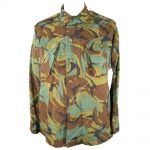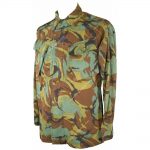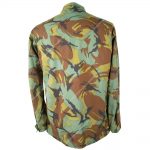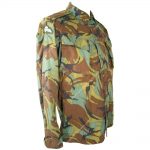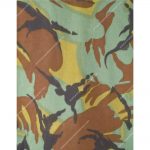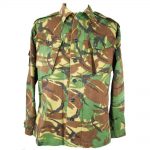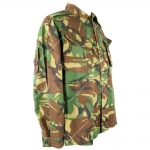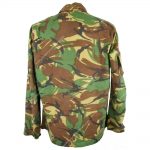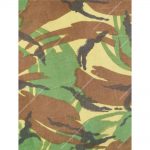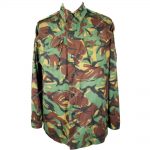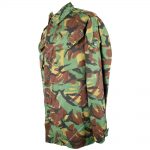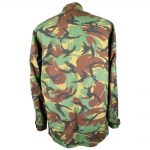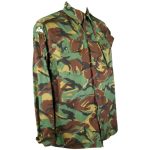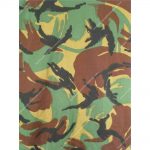Jacket, Combat (Tropical)
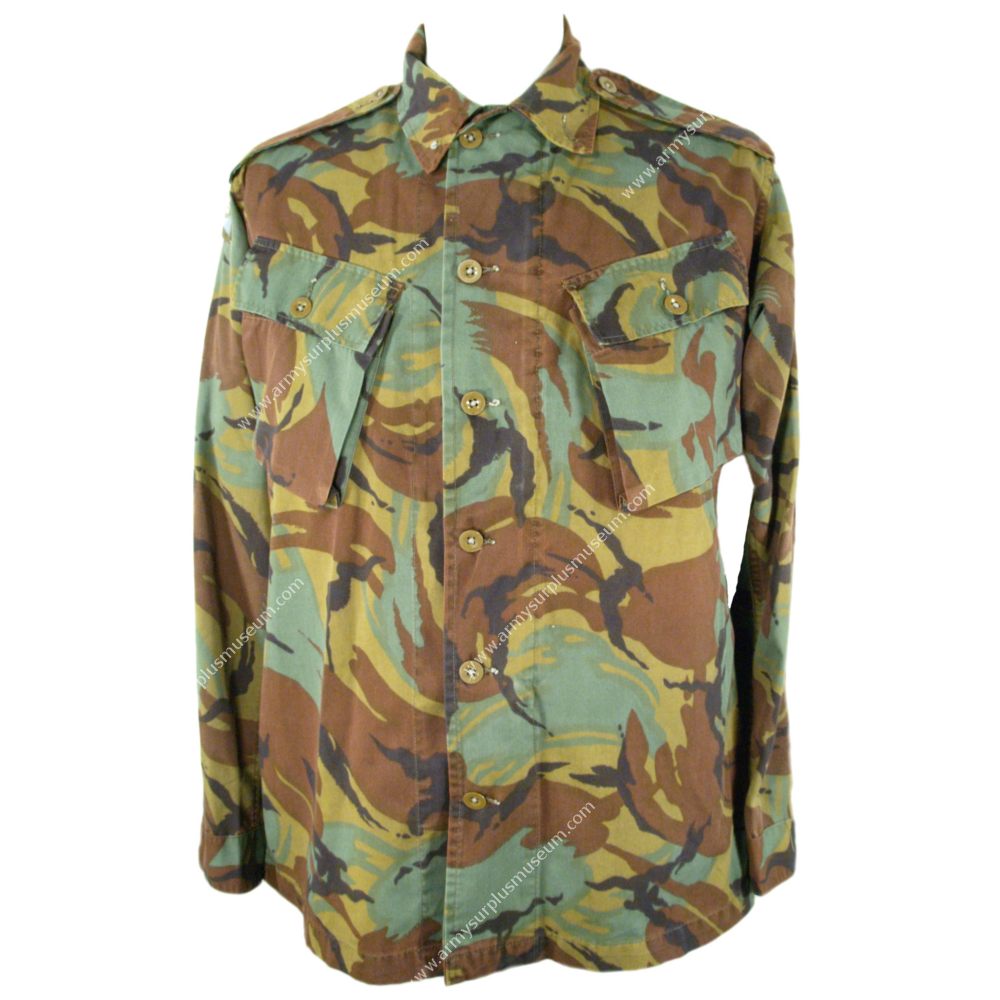
General Information
Name: Jacket, Combat (Tropical).
Country of Origin: The United Kingdom.
Camouflage Pattern: Tropical Disruptive Pattern Material.
Uniform Family: No. 9 Tropical Combat Dress.
Number Of Pockets: Two.
Windproof: Yes.
For more specific details such as date of production, manufacturer, stock number, contract number, size, and weight, see individual examples.
Similar Objects
History
The Jacket, Tropical Combat (Shirt) is designed for use in jungle and arid environments. Made from a lightweight blend of cotton and polyester, it features a printed tropical DPM camouflage and can be worn tucked in or out of trousers.
First issued in the early 1970s, the Jacket, Combat, Tropical (Shirt) replaced the jungle green Aerotex 50-Pattern shirt, which had been issued in various forms since the 1950s. The shirt was part of the No. 9 Tropical Combat Dress, worn by British soldiers stationed in tropical regions around the world, and was also worn by some soldiers during the Falklands War.
This new style of shirt was a complete redesign compared to the earlier 50-pattern jacket. Moving away from the colonial-style “bush” jacket, it no longer had four pockets or an adjustable waist belt.
The shirt was favored in temperate regions due to its comfort compared to the woolen Khaki Drill (KD) Shirt that was worn with the No.8 Temperate Combat Dress uniform. Unlike the KD shirt, the tropical combat shirt wasn’t itchy around the neck and featured much larger pockets, along with a camouflage pattern. However, due to its high nylon content, it was banned from being worn in Northern Ireland due to the IRA’s use of petrol bombs, which could lead to deep tissue burns.
Throughout its service, the shirt was produced in a range of tropical DPM patterns, but the design remained largely unchanged until it was withdrawn from service with the introduction of the 94/95-Pattern clothing system.
Description
The shirt features a versatile double-ply collar that can be worn folded down or pulled up around the neck. The collar points can be buttoned down or left open, depending on preference. Both shoulders are equipped with button-down loops.
The front of the shirt closes with a 3/4-length nylon zip, protected by an external storm cover that buttons down on the right side. Inside, there is a simple folded storm cover over the zip.
The sleeves are loose-fitting and naturally hanging, ending in basic cuffs that secure around the wrists with button-down cloth tabs offering two adjustment points.
For storage, the shirt includes two large bellows chest pockets with button-down box-style lids. Additionally, the upper arm of the left sleeve has five angled pen channels.
Examples
Example One
Example one, dated circa 1982, was produced by James Smith & Co. (Derby) LTD, Satvley. This example features an early style Tropical DPM pattern printed on the fabric and light green plastic buttons. Sewn to the upper right shoulder are British parachute wings.
Additional Information
Contract Number: CT4B/407.
Size: 190/104.
Height- 190cm.
Chest- 104cm.
NATO Size- 8090/9604.
Top pockets- 1L each.
Weight: 550g.
Object Number: 8730-826-36124.
Example Two
Example two, dated circa 1988, was produced by James Smith & Co. (Derby) LTD, Satvley. This example features a Temperature DPM camouflage pattern and includes a field dressing pouch added to the upper right sleeve.
Additional Information
Contract Number: Yet to be identified.
Size: 180/104.
Height- 180cm.
Chest- 104cm.
NATO Size- 7080/9604.
Top pockets- 1.2L each.
Upper arm pocket- 200mls.
Weight: 450g.
Object Number: 8730-826-36119.
Example Three
Example Three, dated circa 1992 and manufactured by Cookson and Clegg LTD, has been renamed “Jacket, Combat, Tropical Jungle DPM.” This version features a new style of tropical DPM pattern printed on lighter weight cloth.
The design includes positive seals on the pocket lids and a combined pen and ruler pocket on the upper left sleeve (replacing the previous pen sleeves). Sewn to the upper right shoulder are British parachute wings.
This jacket design, along with the matching trousers, was used by the New Zealand Defence Force as the base for their 1995 style field uniform.
Additional Information
Contract Number: Yet to be identified.
Size: 180/104.
Height- 190cm.
Chest- 104cm.
NATO Size- 8090/9604.
Top pockets- 1.3L each.
Upper arm pocket- N/A.
Weight: 500g.
Object Number: 8730-826-36127.

